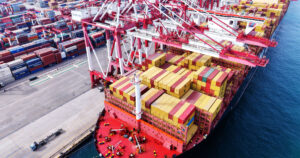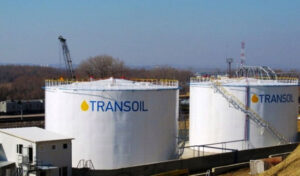
171 enterprises and communities from 14 regions of Ukraine have used the simplified procedure for changing the designated use of agricultural land to industrial and energy land for the construction of new enterprises and power plants. This was announced at the Kyiv International Economic Forum by Dmytro Kysylevskyi, Deputy Head of the Verkhovna Rada Committee on Economic Development. He is the author of the law that reduced the duration of changing the designated land use from 1–3 years to 1.5 months.
Decisions to change the designated purpose of land under the simplified procedure have been adopted for the construction of production and warehouse facilities (75 plots), production of energy from renewable sources (42 plots), industrial production and industrial parks (26 plots), and other facilities (28 plots). The highest number of positive decisions was adopted in Kyiv, Zakarpattia, Rivne, Zhytomyr and Kirovohrad regions. No positive decision has yet been adopted in Sumy, Donetsk, Zaporizhzhia, Ivano-Frankivsk, Luhansk, Odesa, Kharkiv, Kherson, Khmelnytskyi, and Cherkasy regions.
In total, under the simplified procedure, the designated use of land has been changed from agricultural to industrial and energy use for plots with a combined area of 1,050 hectares. Of these:
434 ha – production of energy from renewable sources
385 ha – production and warehouse facilities
121 ha – industrial production and industrial parks
110 ha – other.
“Land purchase and the subsequent change of its designated use for a long time was one of the most time-consuming and corruption-prone stages of making investments in industry and energy. On average, this simple procedure in essence used to take 2–3 years of bureaucracy, corruption, and humiliation of entrepreneurs. Now the situation has changed. The simplified procedure takes 1.5–2 months, and it allows saving time and money when launching new production. But most importantly, investors who dare to build industrial or energy facilities during the war feel a better attitude from the state,” noted Dmytro Kysylevskyi.
The simplified procedure for changing the designated use of land plots applies to agricultural land outside populated areas, where no urban planning documentation has been developed, for the placement of facilities in industry and energy defined by law:
Industrial buildings and warehouses
Pipelines, utilities, and power transmission lines (excluding main oil pipelines and main gas pipelines)
Complex industrial structures (excluding enterprises and facilities for the enrichment and processing of nuclear materials; facilities and furnaces for waste incineration; nuclear power plants)
Buildings for agricultural purposes, forestry, and fisheries.

In September, the Chinese economy showed higher-than-expected growth rates in industry and retail trade, indicating a gradual recovery in domestic demand and business activity.
According to the National Bureau of Statistics of China, industrial production grew by 6.5% year-on-year, the highest rate since June. In August, growth was 5.2%, and analysts had expected a slowdown to 5%.
The largest contributors were:
manufacturing — +7.3%,
mining — +6.4%,
oil and gas — +8.9%,
automobile production — +16%,
computers and telecommunications equipment — +11.3%.
Growth was recorded in 36 of 41 sectors of the economy. Overall, industrial production increased by 6.2% in the first nine months of 2025 compared to the same period last year.
Retail sales in September grew by 3% year-on-year. This is slightly less than in August (3.4%), but still better than analysts’ forecasts (2.9%).
The largest increases were in sales of food products (+6.3%), jewelry (+9.7%), and clothing (+4.7%). Car sales rose by 1.6%, while petroleum product sales fell by 7.1%.
Since the beginning of the year, retail turnover has reached 36.6 trillion yuan (about $5.1 trillion), which is 4.5% more than a year earlier.
Investments in fixed assets as a whole declined slightly, by 0.5%, mainly due to a decline in the construction sector (-13.9%). At the same time, investments in infrastructure and manufacturing grew by 1.1% and 4%, respectively.
The unemployment rate in September fell to 5.2% from 5.3% a month earlier.
Experts from the Experts Club analytical center note that the Chinese economy remains stable despite the slowdown in global demand and difficulties in the real estate sector.
Reference: Experts Club.
For several years now, China has ranked first in the world in terms of economic size, calculated in terms of purchasing power parity (PPP), ahead of the US and the EU. This confirms its status as the largest industrial and consumer center on the planet.

Germany is losing industrial jobs at an accelerated rate – and this is no longer a localized slump, but a steady trend. According to a fresh study by EY, the industry cut employment by 2.1% over the year, with the auto industry losing about 51,500 jobs (-6.7% year-on-year). Weak demand, expensive energy, competition from Asia, US duties and the expensive transition to electric vehicles are squeezing margins and forcing concerns to optimize staffing levels. In Q2 2025, industry revenue fell 2.1% YoY to €533bn, continuing a series of quarterly declines.
Structurally, the auto sector was the hardest hit, but contractions are also evident in mechanical engineering and metals, while chemicals and pharma are showing relative stability, as evidenced by both public excerpts from the EY barometer and industry commentary in the German business press. In aggregate, German industry has shed around a quarter of a million jobs since 2019, reflecting the cumulative effect of several consecutive shocks.
Operational metrics point to a sluggish cycle, with new orders in manufacturing falling in June and annualized turnover declining; this combination usually signifies weakness over the horizon of the coming quarters, even if individual months produce technical bounces in production. At the macro level, this is combined with a fall in GDP in Q2 and a downward revision of the dynamics of the beginning of the year.
The political backdrop has become tougher, with Chancellor Friedrich Merz openly stating that the current welfare state model is “unfundable” without reforms, signaling a possible shift in budget priorities in favor of incentives for employment and industrial competitiveness. For business, this means less room for “inertia” subsidies and more pressure on productivity, R&D and export adaptation.
What this means for companies and the labor market. Automakers and their supply chain will likely face a second wave of restructuring to accommodate the EV economy and US tariff geopolitics; engineering will continue to lose low-margin positions to Asian competitors, and growth will shift to high-engineering value-added niches. For chemicals and pharma, the window of resilience is preserved through contractual models and pricing power, but energy-intensive segments remain vulnerable to spot gas and electricity disruptions. The labor market will be “two-speed”: release on the assembly line and in basic metalworking in parallel with a shortage of specialists in automation, electronics, software, battery technologies and chemical technologies – this is already evident in the structure of vacancies and industry surveys.
Conclusion. The job cuts are not the “end of industry” but a painful realignment: Germany is losing mass jobs where it is losing out on costs and is trying to retain and grow employment in capital- and knowledge-intensive segments. The key to a turnaround is cheaper energy, faster permitting procedures, prioritization of industrial investments and retraining for the electric and digital agenda. In the meantime, order and turnover statistics signal that the bottom of the cycle has not yet been passed.
https://t.me/relocationrs/1332

In 2025, construction will begin in Serbia on the largest food industry enterprise in decades—a corn starch processing plant. The project is being implemented by Amelo, part of the Moldovan agro-industrial group Trans-Oil.
Location and scope of the project
The plant will be built in the city of Sremska Mitrovica on the site of the former Checherana sugar factory. The total investment will amount to €35 million. The plant will be able to process up to 250,000 tons of corn per year, producing native and modified starch, as well as corn syrup for the food, pharmaceutical, and chemical industries.
Construction will begin in May 2025 and will last 18–20 months. The project partner is the Chinese company Myande Group, which specializes in equipment for starch production.
Once operational, the plant will create around 150 new jobs. Sremska Mitrovica Mayor Branislav Nedimovic noted that this is one of the largest investments in Serbia’s food industry in the last 40–50 years.
The new plant will increase domestic corn processing, reduce raw material exports, and increase the added value of products. This will strengthen Serbia’s position in the European market for starch and related products.

Following the signing of a cooperation agreement between Ukraine and the US in the field of mineral resources, the world community’s attention has been focused on Ukraine’s potential for rare earth element (REE) extraction. These elements are critical for modern technologies, including the production of electric vehicles, wind turbines, and defense equipment. However, experts caution against excessive optimism about the rapid realization of this potential.
Volodymyr Khaustov, scientific secretary of the State Institution “Institute of Economics and Forecasting of the National Academy of Sciences of Ukraine,” honored economist of Ukraine, and candidate of technical sciences, shared his vision of the prospects for REE mining in Ukraine.
“Ukraine does indeed have certain reserves of rare earth elements, but most of them were explored during the Soviet era, and this data needs to be updated. In addition, a significant portion of potential deposits are located in areas currently under Russian control or near the combat zone,” Khaustov noted.
The expert also highlighted the technological and infrastructural challenges associated with the extraction and processing of REEs.
“Even if we can gain access to these deposits, the question of their economic viability arises. REE extraction is a complex and expensive process that requires modern technology and significant investment. At present, Ukraine does not have the necessary infrastructure for the full cycle of extraction and processing of these elements,” he explained.
It should be noted that, according to research, only one of the six known REE deposits in Ukraine — Novopoltavskoye in the Zaporizhzhia region — has confirmed reserves and is open for licensing. However, even this deposit requires an investment of about $300 million for full development.
In addition, the global REE processing market is currently dominated by China, which controls about 90% of the world’s capacity for the purification and processing of these elements. This creates additional challenges for countries seeking to develop their own REE production.
“For Ukraine to become competitive in the global REE market, it is necessary not only to develop deposits, but also to create a complete value chain — from extraction to processing and manufacturing of end products. This requires strategic planning, significant investment, and time,” Khaustov emphasized.
In conclusion, although Ukraine has potential in the field of rare earth element extraction, realizing this potential requires a comprehensive approach, significant resources, and time. Experts call for cautious optimism and strategic planning to achieve success in this industry.
For more details on the prospects for rare earth extraction in Ukraine, watch the video: https://www.youtube.com/watch?v=UHeBfpywpQc&t
You can subscribe to the Experts Club channel at: https://www.youtube.com/@ExpertsClub
ECONOMY, EXPERT, EXPERTS CLUB, INDUSTRY, rare earth elements, rare earths, Volodymyr Khaustov